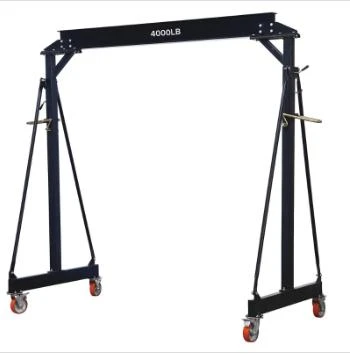Gantry Systems for Enhanced Overhead Protection and Safety Solutions in Construction Sites
Overhead Protection Gantry Ensuring Safety in Construction Sites
In the world of construction and civil engineering, safety is paramount. One of the critical components to ensure worker safety, especially in busy construction sites, is the use of overhead protection gantries. These structures play a vital role in protecting workers below from potential hazards such as falling objects, debris, and other materials that may inadvertently drop from elevated work areas.
Understanding Overhead Protection Gantry
An overhead protection gantry is a temporary structure placed over a worksite or pedestrian walkway. It consists of a set of beams, supports, and a covering that creates a safe passage for workers and pedestrians, shielding them from potential hazards originating from above. These gantries are particularly prevalent in construction projects involving scaffolding, high-rise buildings, or any scenario where materials are lifted or moved at significant heights.
Design and Structure
The design of an overhead protection gantry must adhere to strict safety regulations and standards to ensure its effectiveness. Engineers typically use robust materials such as steel or reinforced aluminum for construction to withstand the weight of falling objects and environmental factors such as wind and rain. The gantry must be securely anchored to the ground to prevent tipping or collapse during adverse conditions.
Moreover, the covering of the gantry is a crucial aspect. Common materials include heavy-duty tarps or mesh that can catch debris without allowing it to penetrate through. Depending on the site and specific requirements, the height and width of the gantry can vary, adjusting to accommodate the flow of traffic and the level of construction activity occurring above.
Importance of Overhead Protection Gantries
overhead protection gantry

The primary purpose of these gantries is to safeguard human life. With construction sites being inherently risky places, the likelihood of accidents increases, particularly with materials being handled at height. Overhead protection gantries significantly reduce the risk of serious injuries to workers and pedestrians in the vicinity. By establishing a clear delineation between high-risk areas and pedestrian pathways, these structures promote a safer work environment.
In addition to safety, the implementation of overhead protection gantries can also minimize project delays and associated costs that arise from accidents. Work stoppages due to injuries can lead to substantial financial setbacks, making it imperative for construction firms to invest in safety measures such as these gantries. Furthermore, they enhance the public perception of a construction company, demonstrating a commitment to prioritizing safety and minimizing risk.
Regulatory Compliance and Best Practices
Construction companies are required to comply with local and international safety regulations when implementing overhead protection gantries. Regulatory bodies often set specific guidelines concerning the design, construction, and maintenance of these structures. Companies must regularly inspect the gantries to ensure they remain in good condition and capable of withstanding the intended loads.
Best practices also involve training workers on the importance of these structures, ensuring they understand the areas where overhead protection is necessary, and promoting a culture of safety at the job site. Regular safety audits can help identify potential hazards and assess the effectiveness of the overhead gantry in providing protection.
Conclusion
Overhead protection gantries are indispensable in modern construction safety protocols. They serve as a vital barrier protecting workers and pedestrians from the risks posed by elevated work environments. By prioritizing safety through the use of these structures, construction companies not only fulfill their legal obligations but also foster a culture of care and responsibility that underpins successful project delivery and enhanced reputations within the industry. As we move towards more complex construction projects, the role of overhead protection gantries will undoubtedly continue to be instrumental in ensuring safety on site.
-
Versatile Lifting Solutions with Gantry and Overhead CranesNewsAug.29,2025
-
The Versatile Mobile Gantry Crane SolutionNewsAug.29,2025
-
Reliable Movement with Heavy Machinery Skates and RollersNewsAug.29,2025
-
Reliable Lifting Performance with 2000 lb Gantry Crane and 2 Ton Overhead SystemsNewsAug.29,2025
-
Maximize Lifting Efficiency with PML Magnetic LiftersNewsAug.29,2025
-
Efficient Relocation Starts with Reliable Machinery MoversNewsAug.29,2025
-
Efficient and Safe Lifting with Permanent Magnetic LiftersNewsAug.29,2025
